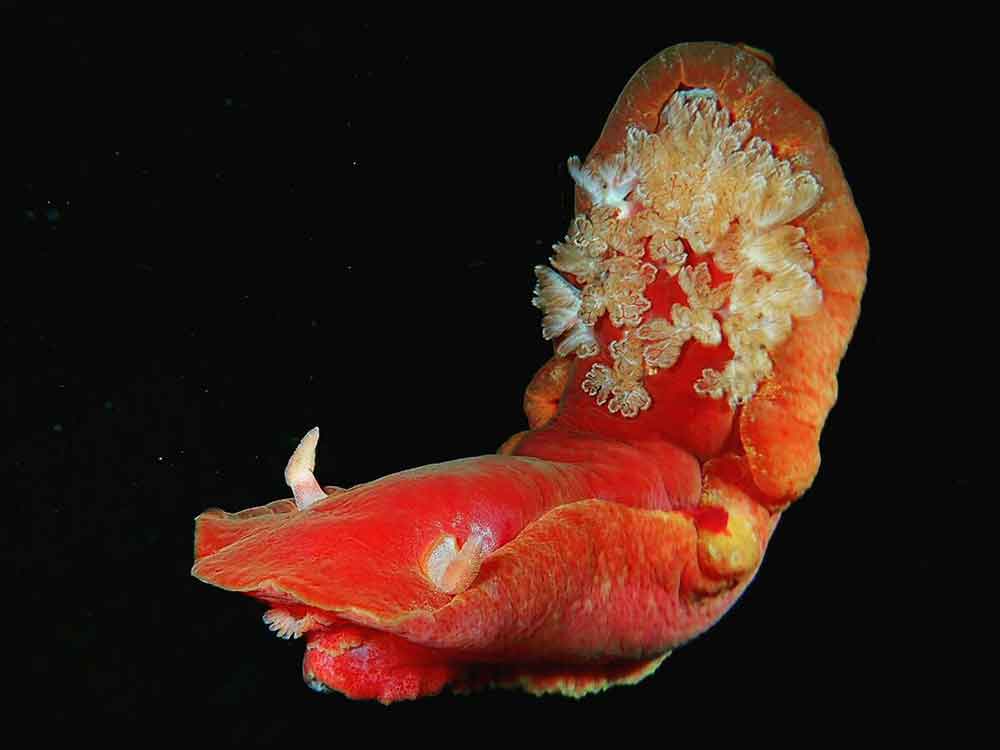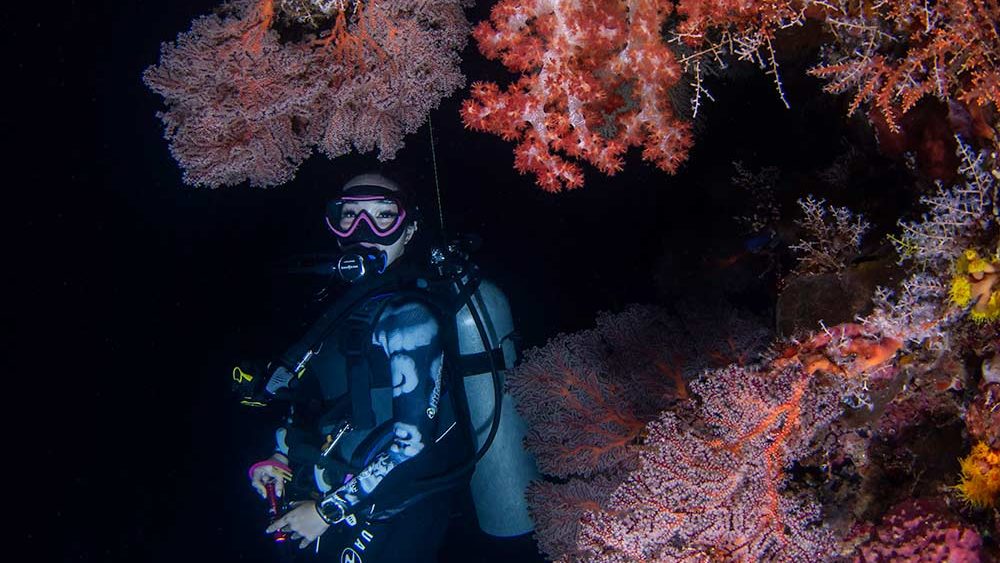Diving the USAT Liberty Wreck during the day is an extraordinary experience, but diving it at night is truly something else. Once the sun goes down, the wreck takes on a whole new look as different animals and colors come out.
Here’s five ways that night dives offer a fresh perspective of this popular dive site.
1. Sleeping bumphead parrotfish
One of the most distinctive fish that you’ll see at the Liberty Wreck is the bumphead parrotfish. These unique creatures are recognizable by their beak-like teeth, large size, and the bulging bump on their forehead. Bumpheads are the largest of all parrotfish, growing up to 1.3 meters in length and weighing up to 46 kilograms.
Bumphead parrotfish tend to travel in small schools and are only found in certain parts of the world. Here in Tulamben, we are lucky to have a resident school of bumpheads that lives at the Liberty Wreck.
Tulamben’s bumpheads spend their days grazing on coral and algae as they wander through the surrounding waters. But once the sun goes down, they congregate back at the Liberty Wreck. Since bumphead parrotfish often sleep in caves at night, the shipwreck’s deteriorating hull makes the perfect bedroom.
When you’re out exploring the Liberty after dark, be sure to peer inside to see the bumphead parrotfish that sleep inside the wreck each night.

2. Nocturnal critters and hunting predators
While the bumpheads are dozing off, other critters are just springing to life. Night dives are a chance to see nocturnal animals that remain hidden during the day and are more active at night.
Reclusive lobsters wander out of their holes and tiny crabs scuttle about the reef. All kinds of shrimp come out to play at night, their reflective eyes and brightly patterned bodies adding vibrance to the reef.
Night time is also an optimal time to spot hungry predators, such as groupers and moray eels, chasing down their dinner around the wreck.
Don’t be surprised if you find yourself being accompanied by one of these predators. Groupers often use divers’ torch lights to their advantage, hunting down fish that are illuminated by the bright beam. Groupers are also known to engage in collaborative hunting, teaming up with moray eels to corner their prey.
If you’ve been on the Liberty Wreck during the daytime, you’ll know that it is unusual to see moray eels swimming out in the open. Because they spend their days tucked away in crevices, you’ll likely only see their head poking out from a hole in the reef. But at night, the moray eels emerge from their hiding spots to feed and divers can witness them slithering around the wreck. These formidable creatures can grow up to three meters long, making this quite the spectacle to see.
3. Dancing nudibranchs
Night time on the Liberty Wreck also offers the chance to witness an entrancing performance by the Spanish dancer nudibranch. During the day, Spanish dancers hide within the dark crevices of the wreck. But at night these elusive critters emerge from their hiding spots to feed on sponges.

The Spanish dancer stands out from other species of nudibranch due to its large size and unique “dance” moves. While other nudibranchs tend to be smaller than a finger, Spanish dancers are typically between 20 to 30 centimeters in length. Unlike most other nudibranchs, Spanish dancers swim in addition to crawling around. When they swim, their brilliant red bodies unfurl and undulate gracefully in the water, emulating the swirling movement of a flamenco dancer’s ruffled skirt. This likeness is how they earned their name.
Here in Tulamben, the best time to spot the Spanish dancers is actually during the rainy season. What can we say, there’s just something special about dancing in the rain!
4. Vibrant colors
The Spanish Dancer isn’t the only reason the wreck is more colorful at night. It might not seem counterintuitive, but the colors of the reef are actually much more vivid at night than during the day.
During the day, the corals are lit by natural sunlight which passes through water. Because the light is filtered through the water, the deeper you dive the less colors you can see. Reds, oranges and yellows are the first colors to go. This causes corals to have a duller, greenish-blue hue during the daytime.
At night, it’s easier to see the reef’s true colors thanks to the help of artificial torch lights. When divers shine their light on the corals, it illuminates them and brings out the bright colors of the reef. These bold, vibrant colors are one of the reasons why underwater photography is so exciting at night.
5. Glow-in-the-dark fish
If you think you’ve seen it all, turn off your torch light for a moment and that’s when the magic truly begins. If you’re lucky, the dark waters will suddenly come to life with twinkling lights that look like little fireflies darting around. This incredible phenomenon is all thanks to the flashlight fish, which have a bioluminescent organ under their eye.
Keep in mind that flashlight fish are only found on certain parts of the wreck. If you want to see them during a night dive, be sure to go with an experienced guide who knows where they tend to hang out.
The flashlight fish aren’t the only ones that put on an underwater glow-in-the-dark show. You can also witness bioluminescence if you wave your arms around after switching off your light. This movement causes plankton to produce tiny specs of light that make the sea sparkle.
Book a Night Dive on the Liberty Wreck
As you can see, diving the Liberty Wreck at night is a captivating adventure. If you’re interested in booking a night dive on the wreck during your next visit to Bali, please send us a message. Our top-rated dive center is located in the center of Tulamben and our local team would be happy to show you around the Liberty Wreck.






Comments are closed.